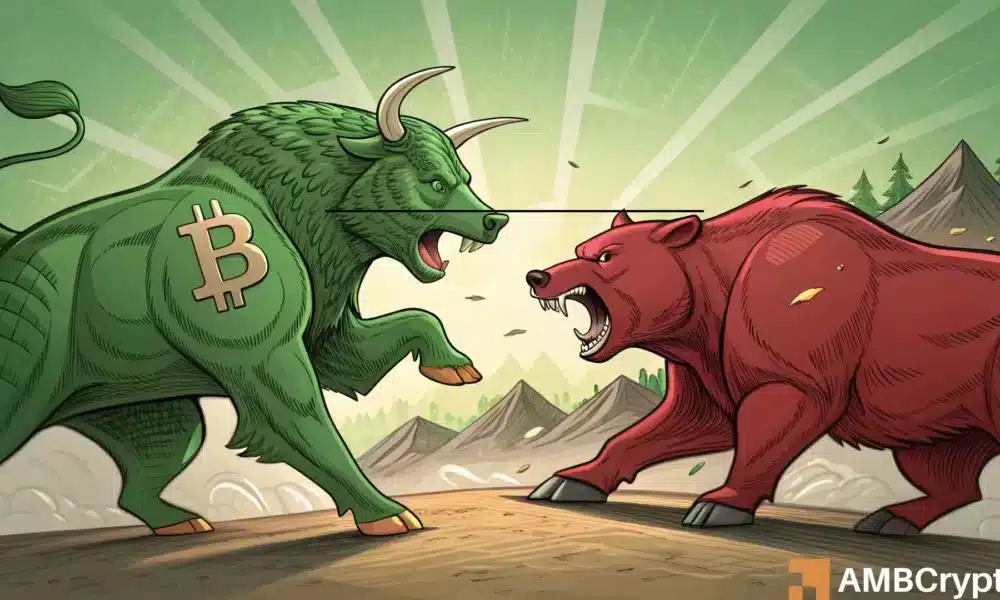Key Takeaways
What’s driving Bitcoin’s recent price decline?
Increased selling pressure on Binance is the primary driver, as indicated by multiple bearish market indicators.
Is Bitcoin’s bull cycle over?
No, on-chain data and whale accumulation suggest the broader bullish trend remains intact despite short-term weakness.
Since rebounding to $116k days ago, Bitcoin [BTC] has dropped sharply, hitting a low of $110k.
In fact, at press time, Bitcoin was trading at $110,641, marking a 1.76% decline over the past 24 hours. This dip extends a weekly bearish trend, declining by approximately 9.28%.
Amid the recent price drop, crypto investors are actively debating the cause of Bitcoin’s weakness, with CryptoQuant pointing to increased selling activity from Binance traders.
Binance drives Bitcoin’s decline
According to CryptoQuant, Bitcoin’s recent decline was primarily driven by increased selling pressure on Binance. Three key market indicators point to Binance leading the current sell-off.
To begin with, the Coinbase Premium remains relatively high, even as Bitcoin’s price continues to decline.


Source: CryptoQuant
With this metric holding positive while price drops, it implies that selling pressure from Binance has outweighed the buying interest from U.S. investors.
Secondly, although Bitcoin’s Funding Rate has remained positive across all other exchanges, it has held negative for four consecutive days on Binance.


Source: CryptoQuant
This divergence suggests that traders on Binance are aggressively positioning themselves for a short-term downside move.
Finally, Bitcoin’s Taker Buy Sell Ratio has declined to its lowest levels in more than a year, reflecting aggressive selling. Thus, investors in the derivatives market are mostly closing positions.


Source: CryptoQuant
In fact, Futures Taker CVD has remained red throughout the past week, further confirming seller dominance in the Futures.
Cumulatively, these three market indicators suggest that the current Bitcoin market drop is primarily driven by Binance activity.


Source: CryptoQuant
Is the cycle ending?
Despite bearish signals from Binance activity, bullish sentiment persists across other parts of the market.
According to CryptoQuant, this short-term weakness does not indicate the end of the current cycle. On-chain fundamentals remain strong, and the overall bullish structure is still intact.
For instance, Checkonchain data showed that whale and megawhale exchange activity has signaled firm bullish conviction as they continue to accumulate.


Source: Checkonchain
The Whale and Exchange Balance Change has dropped to monthly lows, hitting -100k BTC, indicating more outflows from the cohort.
At the same time, Megawhales Exchange Balance Change has dropped to -31.9k BTC, further evidencing this market conviction.


Source: Checkonchain
On top of that, Bitcoin’s Reserve Risk ratio has declined since the 6th of October, as per Checkonchain data. At press time, this ratio sat around 0.0094, suggesting that long-term holders are not selling and have a high conviction.
Thus, BTC is undervalued relative to holder conviction; therefore, the drop has created an accumulation window for holders.
Finally, Bitcoin short-term holders (STHs) are holding strong as they lack any incentive to sell. As such, STH Sell Side Risk has dropped to 0.001%, suggesting STHs are unwilling to sell at a loss.


Source: Checkonchain
Therefore, STHs are optimistic about the market and expect prices to rebound after clearing this short-term weakness.
What’s next for BTC
According to AMBCrypto, Bitcoin is facing intense bearish pressure on Binance, while bulls elsewhere have attempted to retake the market.
These market conditions leave Bitcoin at a decision point. Thus, if bears on Binance continue to dominate the market, BTC could risk a drop to $108,469.
However, if bulls, especially whales, manage to reverse course, BTC will first reclaim $112,702 and eye $115k.







